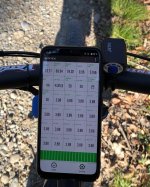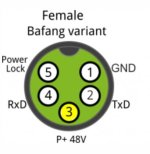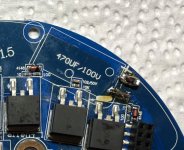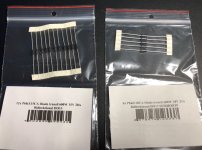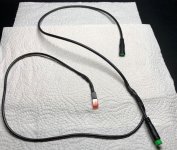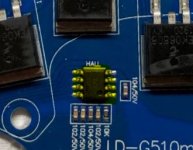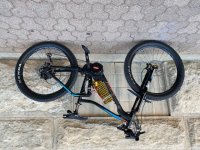tatawaki said:
Thank you!!!
I will test my luck with running a 19S battery but may run 52v to start at 46 amps.
1) Can you clarify which specifications of the TVS Diode? does it need to be different based on what voltage battery you're running?
https://www.digikey.ca/en/products/filter/tvs-diodes/144?s=N4IgjCBcoLQExVAYygFwE4FcCmAaEA9lANogCsIAuvgA6pQggC%2BLQA
2) clarify what wattage and package size are the 2.5ohm resistors
EDIT:
?CLAMPING VOLTAGE: would be the max voltage i'd see from my battery. so If I'm running a 80v battery, I'd want to have it back down to ~63max voltages. so Clamping should be around 17V+?
?REVERSE STANDOFF VOLTAGE: your operating voltage of 5v?
?REVERSE BREAKDOWN VOLTAGE: the point where it will start working again?
last, does these modifications need to be done if you're pumping more amps only and keeping voltage?
Thank you again! As much as I like the Phaserunner, I want a 'factory setup' for my new bike.
yep, my intention also was to use the phaserunner (I have the v1.3 Bafang controller in my Frey AM1000 with normal hall sensors so no problem, my other bike has the v1.5 controller with integrated chip hall sensor) but before I just wanted to check the maximum capabilities of my original controller or let's say : try to kill the original controller - but hey, it works stable as a rock since 1000km. but if you have the v1.5 with integrated hall sensors as a chip and no unused normal hall sensors = forget it !!! your phaserunner experience won't be nice... you can only run it sensorless. Having the v1.5 I recommend having a spare part controller - no chance to use something else without normal hall sensors. I buy the spare part from the guys that produce the Excess/Innotrace controller so after their modification they have original controllers (v1.5) left and sell them.
yep, 46 amps seems to be the sweet spot ( 23 amps in controller software).
TVS diode is much more simpler and these are cent articles ( 50 pieces = 4-5 Euro). In fact I use an 18 volts reduction in my setup ( don't forget: this is transferred in heat but not much). I don't have the digikey numbers but taken a photo (P6KExxCA where xx=voltage drop):
TVS.JPG
these diodes are always reducing e.g. 18 volts , it doesn't matter what battery you use. but of course for a 52v battery voltage will be too low using 18 volts reduction (undervoltage protection will kick in). for that reason I soldered a JST plug to the display extension cable to put in different diodes/to change the diode or to short it for "original use".
JST.JPG
the modification is not necessary if you only want to pump more amps. you can use up to 15s batteries with the original setup ( 62.9 volts max).
I don't use 2.5 mOhm resistors. controller layout is not very thick and hard to solder caused by the heat spreader. to avoid damage of the controller I simply soldered 2x 5 mOhm resistors over the exsting 2x 5 mOhm resistors (you can take every 2512 smd resistor but I recommend a mimimum 2 watts specification). resulting in 4x 5 mOhm resistors. not perfect but works without any problems (heat is not transferred directly to the board).
If you have an eggrider v2 display you can adjust the ampere multiplier. so if you choose "2x" (having 4x 5 mOhm resistors or 2x 2.5 mOhm) you will see the correct amperes,volts and watts (until you don't use a TVS diode). really nice.
one last advice: changing the originally caps you should "save" the legs of the original 63volts caps. then solder the legs to the legs of your new 80v or 100v caps. so you won't need very much heat and you don't have to solder directly to the board. don't forget to "glue" them again with high temp silikon (to protect the underlying smd parts and of course the caps themselves) and to route the B+ wire in a different way. I finally protect each solder and the resistors with liquid tape, shunt resistors are marked yellow :
controller.JPG
I used these caps:
caps.JPG




